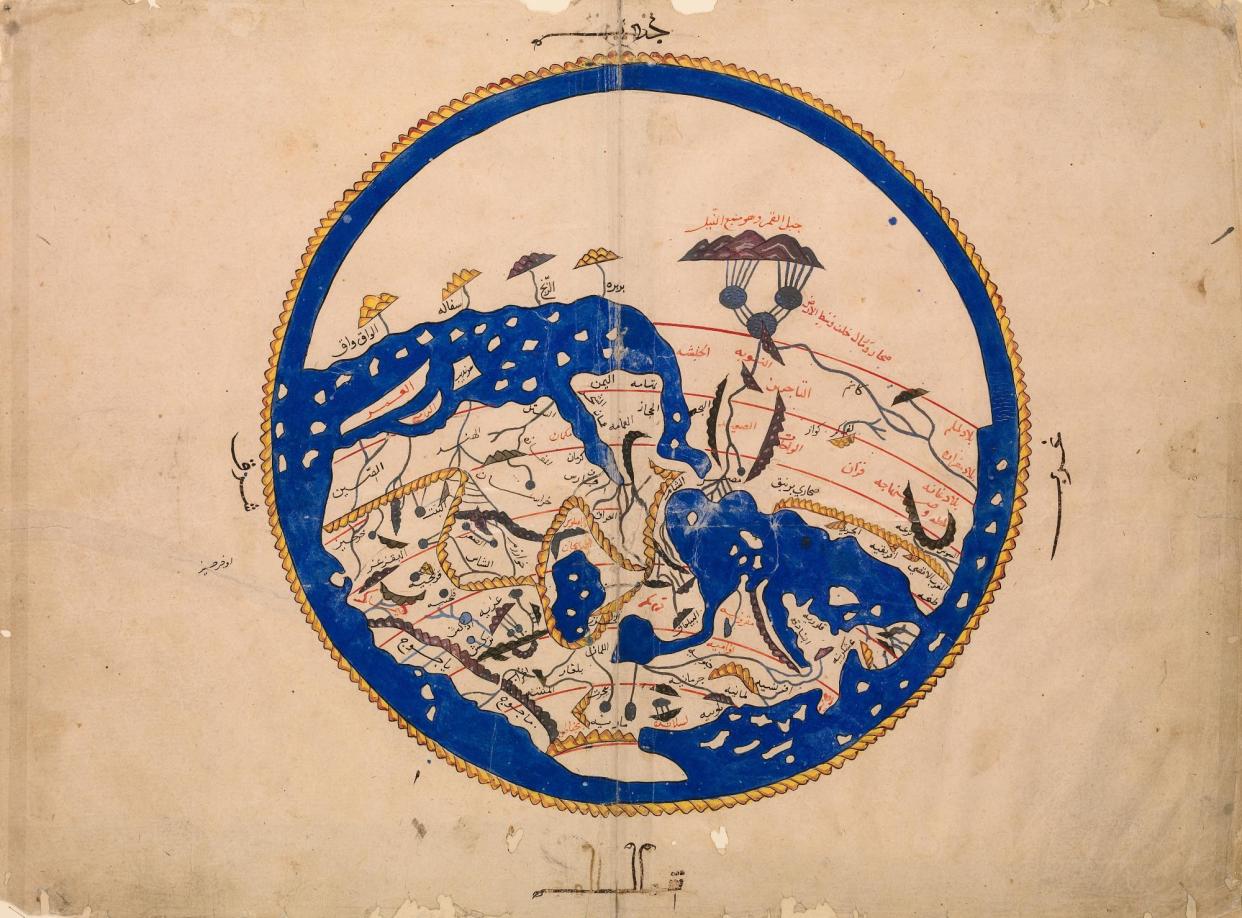Silk Roads review – mesmerising show turns world history upside down

Not many exhibitions turn the history of the world upside down. The British Museum’s mesmerising Silk Roads does, by showing how Asia, Europe and north Africa shared their cultures more than a millennium ago. Far from developing in isolation, let alone in a “clash of civilisations”, east and west were once mutually connected by epic trade routes known as the Silk Roads that carried China’s precious discovery, silk, across the then-known world. If that sounds dry, the British Museum turns it into a fairytale of magic and beauty, as you follow the merchants’ routes to fabulous oases, desert palaces, synagogues, mosques and burial mounds.
You reach the first oasis by clay camel, to be precise a two-humped Bactrian camel of painted ceramic, nearly a metre tall, rearing its head in a bellow you can almost hear. This superb eighth-century statue comes from a tomb in Henan Province, China. Tied to its saddle are bolts of silk that were worth crossing worlds to sell or exchange.
Joining the long-dead rider of this grumpy, resilient beast you travel westwards to Dunhuang, an oasis city on the eastern edge of the Gobi Desert. Today it is in China, but between AD786 and AD848 this Silk Roads stop was ruled by the mighty Tibetan empire. At its temple complex of Mogao, Buddhist art treasures were discovered in 1900 in a hidden cave that transport you to new realms of wonder.
A silk and hemp hanging from this “Library Cave” depicts the Buddha standing in red robes. It holds you in meditative silence, marvelling at the tattered frailty of this masterpiece made more than 1,200 years ago. The delicacy of Buddha’s face and those of surrounding saints (bodhisattvas) is hypnotic. So is a mystical geometrical mandala, drawn in black and white, perhaps in a personal ritual. Beside it is a hilariously alive caricature of a traveller: but he’s a monk not a merchant.
Much more than silk was spread by the Silk Roads. This exhibition cannot possibly tell the whole story of the east-west trade routes from their ancient origins to Renaissance eclipse. Instead, it homes in on the period between AD500 to AD1000 which European historians used to call the dark ages. One of the many lessons here is why they don’t use that term any more. This was an age when new religions were emerging as older ones spread in new ways. They overlapped, intermixed, shared artistic ideas.
You reach Afghanistan to see another Buddha: a clay statue from Bamiyan, headless and handless but with elegantly pleated robes. Beside it is a photograph of one of the colossal Buddhist rock carvings of the same era, destroyed by the Taliban in 2001. Early Muslim writers praised the Bamiyan Buddhas as wonders of the world.
There’s a ravishing display of art from Córdoba in Andalusia, where cultures also mixed freely: an intricate column capital intertwines classical and Islamic decoration next to a hybrid Christian cross. Meanwhile in Fustat, the Arab capital of Egypt, today’s old Cairo, the Ben Ezra synagogue amassed an archive of Hebrew documents that gives glimpses of Jewish life along the Silk Roads. It includes a letter pleading for help from the Jewish community in Kyiv.
Kyiv? Cairo? How many Silk Roads were there, how many places did they connect? The exhibition doesn’t worry too much about pedantically reconstructing actual routes: you could go by sea as well as land through this interlinked medieval wonderland. The proof of connection is in the art. An early Islamic mosaic from a desert palace in Jordan not only adapts designs from the Byzantine Empire but reuses Byzantine tesserae.
The most arresting moments of Silk Roads come in the middle – of the show and of the Old World – where Eurasian peoples long forgotten, or dismissed as barbaric, emerge here as artistic show-stoppers. The Sogdians are not exactly history’s most renowned civilisation. But the Sogdian treasures here, from their capital Samarkand, are dazzling. There’s a mural in bright blues and reds with white horses that look ready for the road; an ornate clay ossuary covered in fighting nudes and enigmatic deities; another mysterious god carved on a carbonised wooden door. It’s a mini-Pompeii, preserving the lost world of a civilisation that was gone by the 12th century.
To get commodities across the deserts and steppes of central Asia, Tang China had to make deals with nomads. A superb Tang statue depicts something the nomads had that China’s silk could buy: horses. But these horse-riding nomads were more than just mounted warriors. They made brilliant art. A funeral banner for a Uyghur named Kara Totok is a masterpiece of realism: against a gold background he holds a leafy branch and looks wisely at us from under his three-pointed crown. Later the Uyghurs would become Muslims. Today their descendants are a persecuted minority in modern China.
On the far side of the world, other tough elites were prospering. A statuette of a seated Buddha was found in Sweden, where it was owned by Vikings. What did these natural born killers make of its peaceful aura? Meanwhile in Sutton Hoo, a Saxon king was buried in a ship, with a gold buckle with red garnets that came from Rajasthan.
So even Britain was plugged into global networks in Anglo-Saxon times. This never was an isolated isle. As a child I’d explore Offa’s Dyke, the earthwork the king of Mercia built to keep out the Welsh. The same King Offa minted one of this exhibition’s last marvels, a gold coin his artisans carefully modelled on an Islamic dinar. They even transcribed the Muslim declaration of faith on its reverse. What are borders after all?
Silk Roads is at the British Museum, London from 26 September to 23 February 2025


